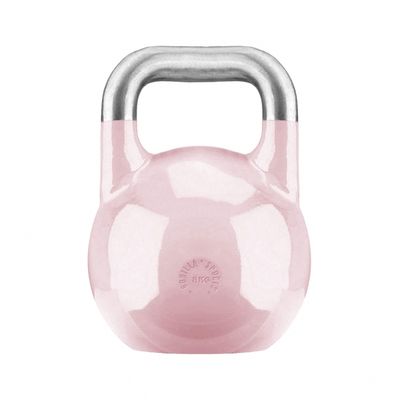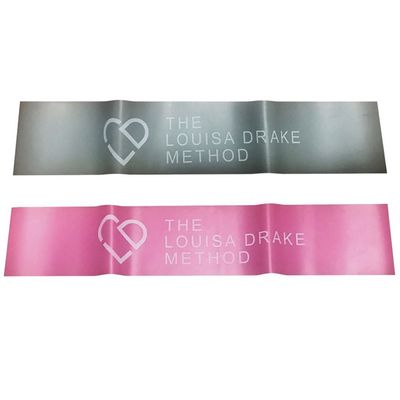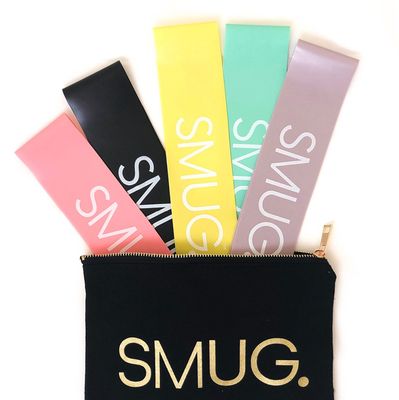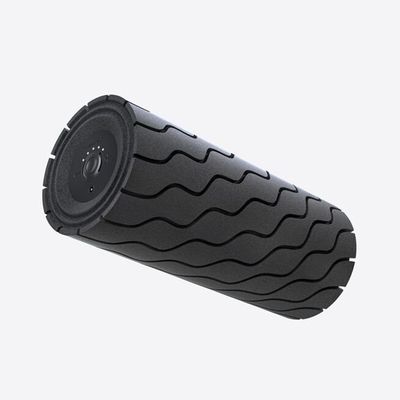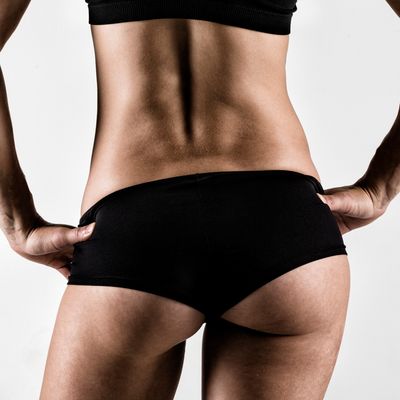
Your Guide To A Better Bum
Think Beyond Aesthetics
The muscles in your bum – that’s the gluteus maximus, gluteus medius and gluteus minimus – are important, and there’s more to them than looking good in your jeans. According to Louisa Drake, former professional dancer and founder of The Louisa Drake Method, a sculpted bottom will help protect your lower back and enhance your performance in other sports, particularly running. Louisa also warns that desk-bound jobs are wreaking havoc with our muscle strength: “We spend much of the day sitting on our butts instead of using them, and this has led to an epidemic of flat, lazy and underused glutes. This has actually been coined ‘gluteal amnesia’, and studies have shown it’s one of the primary causes in the development of lower back pain.” Nicole de Souza, live trainer at OpenFit and Xtend Barre master trainer, also says your glutes play a vital role in preventing injury: “The three muscles in your glutes are among the strongest muscles in the body. They work together to abduct, rotate and extend your hips. Strong glutes are important for proper pelvic alignment and stability, which can prevent knee injuries while running and during exercises such as the deadlift, squat and lunge.”
You Need To Turn Them On
Sitting at your desk all day is a disaster when it comes to lower-body strength, resulting in poor performance when you do hit the gym. When the glutes aren’t strong enough, muscles that weren’t designed for the job will take over; and over time these ‘helper’ muscles may become overstressed, resulting in pain and compression in the lumbar spine, hips and knees. For example, Louisa says it’s common for quads to take over in exercises such as squats and lunges, when in reality the glutes should be doing the majority of the work. “Tight hips can also mean you initiate movements from your knees instead of your hips so the focus is on the legs instead of the glutes.” Louisa also told us isolation of the gluteal muscles is crucial for results – this will not only switch them on after being sat at your desk all day, but will guarantee a full-body burn because working your lower body is more metabolic than any other type of training. One simple switch everyone can make, says Louisa, is to swap a regular lunge for a reverse lunge. “This is a great move to work the glutes a little harder and add flexibility to your hips. Reverse lunges also align the body better, which can help if you are sat down all day.”
Go To Your Limits
If you’re on a mission to sculpt your lower body, the odd squat isn’t going to cut it. “To increase strength and definition in your bum, you need to work the glutes to the point of fatigue,” says Nicole. “Don’t be afraid to use slightly heavier weights than you normally would. Try slowing your lifting tempo too, doing fewer, longer reps to increase your time under tension,” she adds. “And don’t forget to mix things up so you don’t hit a plateau – aim to change up your routine every two months. It’s important to find your challenge zone – if something doesn’t challenge you, it won’t change you.”
Prioritise Strength Training…
“Strength training that targets the three muscles in the glutes can give you a tighter, more rounded look, and if you train specific muscles, these will increase in mass,” says Louisa. “Compound exercises, such as squats or deadlifts that work lots of different muscles at the same time, are also a good idea. In order to have longer-looking, shapely legs and a lifted seat, over-emphasise training the hamstrings and gluteus maximus muscles.” Louisa also explains lifting weights won’t necessarily burn more calories than cardio, but the increased muscle mass you develop will make your body burn more calories during rest. “Remember the body’s fat-burning process continues for around 15 hours after you work out, even at rest.” When it comes to specific moves, Louisa says squats are the holy grail. “The squat tops every list of butt-sculpting exercises as it directly works the glutes. Go one step further by adding hand weights.”
…But Don’t Discount Cardio
The secret to a better bum, says Louisa, lies in the right combination of resistance training and high-intensity aerobic exercise. “Instead of a purely cardio-focused workout, aim to work out three to five times per week, including a mix of both resistance-only sessions and sessions that incorporate both cardio and resistance.” Nicole agrees, adding it’s important to consider your booty-sculpting aspirations in terms of your larger fitness goals. “If your goal is to build strength, ensure you are working in all three planes of motion, so you target the glutes from all angles. If, however, your primary focus is boosting endurance and cardiovascular fitness, consider sprinting – it’s one of the best ways to stimulate your bum and lower body as it requires force and power.”
Incorporate The Golden Moves
“To strengthen and sculpt your bum, moves to add into your routine include the clamshell, donkey kick, butt kick and any hip abduction exercise performed with a medium-strength resistance or thigh band,” says Nicole. “If you enjoy using weights, pair a heavy weight with a single leg deadlift, goblet squat or step-up – this will provide a real challenge to your glutes. If you prefer not to use weights, the glute bridge, hip thrust march, and a single-leg hip press performed on a mat are also great. If you want to get your heart rate going, try a skater hop, curtsy lunge, lunge jump and squat jump.” If running’s your thing, Louisa advises doing two of these exercises as your warm-up prior to hitting the pavements. “This will ensure your glutes are fired up, equalling better performance and a reduced risk of injury.”
Accept Your Body Shape
According to Louisa, your body falls into one of three typical body shapes: you’re either an ectomorph (long and lean, with difficulty building muscle); an endomorph (often pear-shaped, with a high tendency to store body fat); or a mesomorph (muscular and well-built, with a high metabolism and responsive muscle cells). However, these body types aren’t set in stone, and Louisa explains genetics also play a role, so be realistic when it comes to your body goals. “Your genes determine how your body accumulates and stores fat, and in many cases body fat isn’t evenly distributed. Hormones can also affect your body shape: for example, stress-induced cortisol may be tied to fat buildup around your middle, while oestrogen can trigger your body to store fat in your lower abdomen.” You can’t change your body shape, but Louisa says regular exercise, which includes strength training, will give your body definition that can help emphasise certain features or alter your overall shape.
Stock Up On Kit
While bodyweight will get you going, the experts say it pays to invest in some kit to build further gains. “Looped resistance bands are ideal for the lower body – they’re kind on joints and hard on muscles,” says Louisa. “They also enable you to hit a full range of motion, working more places and more muscle for a satisfying burn. I use them to activate my glutes before a workout so they’re switched on and ready to go. Ankle weights can also help enhance your glutes without bulking.”
Think About Recovery
When it comes to scheduling your week, aim for two to three days of rest between heavier compound lifting sessions to give your muscles the chance to recover and adapt, recommends Louisa. “Pay attention to how you feel and any noticeable dips in strength and form between workouts. If you find your strength is significantly lower on some days, give yourself another day’s rest. Recovery plays a vital role in achieving your booty goals – stay on top of your rest by staying hydrated, foam rolling before and after workouts, and sleeping for a minimum of seven hours every night, which will help your body produce the hormones responsible for repairing damaged tissues and muscles.”
Be Consistent
“Don’t expect miracles overnight,” says Louisa. “If you are training regularly, eating well, and focusing on the glutes as well as increasing your physical activity in general, you should expect to notice a stronger bum in around ten weeks.” And don’t forget about other muscles, says Nicole. “Your bum will look even better if the muscles surrounding it look good, so aim to build total-body strength, power and definition. A strong core will also help you sculpt a shapelier bum, and that in turn will allow your glutes to perform their job more effectively.”
For more information about The Louisa Drake Method or to book a class at her Mortimer Street studio, visit LouisaDrake.com. To find out more about the hundreds of on-demand and live classes on OpenFit, visit OpenFit.com.
Shop the equipment you need below...
DISCLAIMER: *Features published by SheerLuxe are not intended to treat, diagnose, cure or prevent any disease. Always seek the advice of your GP or another qualified healthcare provider for any questions you have regarding a medical condition, and before undertaking any diet, exercise or other health-related programme.
DISCLAIMER: We endeavour to always credit the correct original source of every image we use. If you think a credit may be incorrect, please contact us at info@sheerluxe.com.

